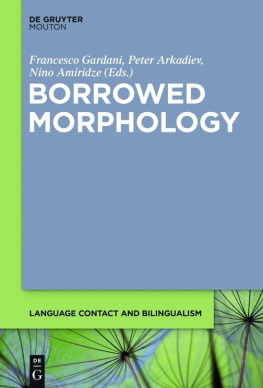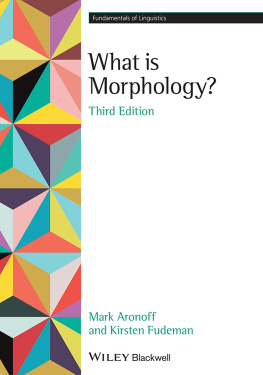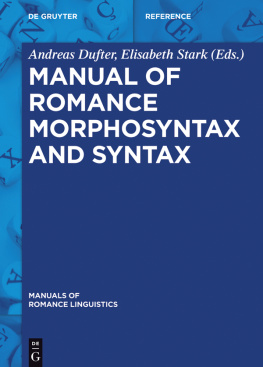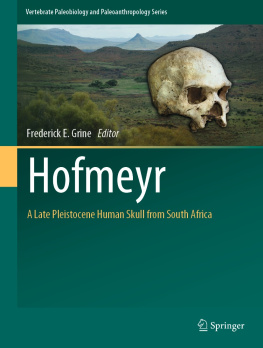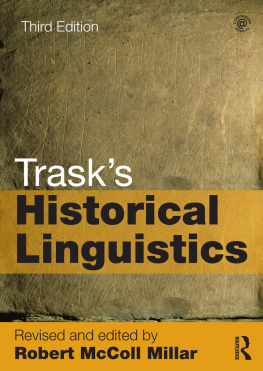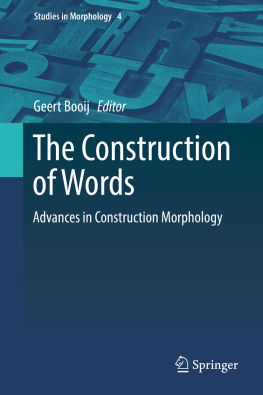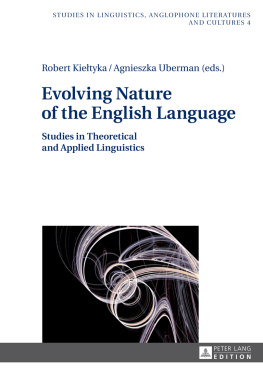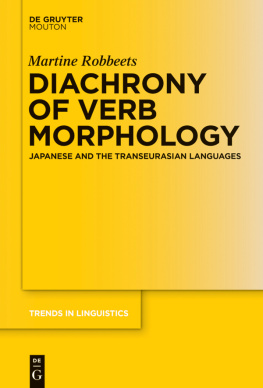Francesco Gardani - Borrowed Morphology
Here you can read online Francesco Gardani - Borrowed Morphology full text of the book (entire story) in english for free. Download pdf and epub, get meaning, cover and reviews about this ebook. year: 2015, publisher: De Gruyter, genre: Science. Description of the work, (preface) as well as reviews are available. Best literature library LitArk.com created for fans of good reading and offers a wide selection of genres:
Romance novel
Science fiction
Adventure
Detective
Science
History
Home and family
Prose
Art
Politics
Computer
Non-fiction
Religion
Business
Children
Humor
Choose a favorite category and find really read worthwhile books. Enjoy immersion in the world of imagination, feel the emotions of the characters or learn something new for yourself, make an fascinating discovery.
- Book:Borrowed Morphology
- Author:
- Publisher:De Gruyter
- Genre:
- Year:2015
- Rating:3 / 5
- Favourites:Add to favourites
- Your mark:
- 60
- 1
- 2
- 3
- 4
- 5
Borrowed Morphology: summary, description and annotation
We offer to read an annotation, description, summary or preface (depends on what the author of the book "Borrowed Morphology" wrote himself). If you haven't found the necessary information about the book — write in the comments, we will try to find it.
Borrowed Morphology — read online for free the complete book (whole text) full work
Below is the text of the book, divided by pages. System saving the place of the last page read, allows you to conveniently read the book "Borrowed Morphology" online for free, without having to search again every time where you left off. Put a bookmark, and you can go to the page where you finished reading at any time.
Font size:
Interval:
Bookmark:
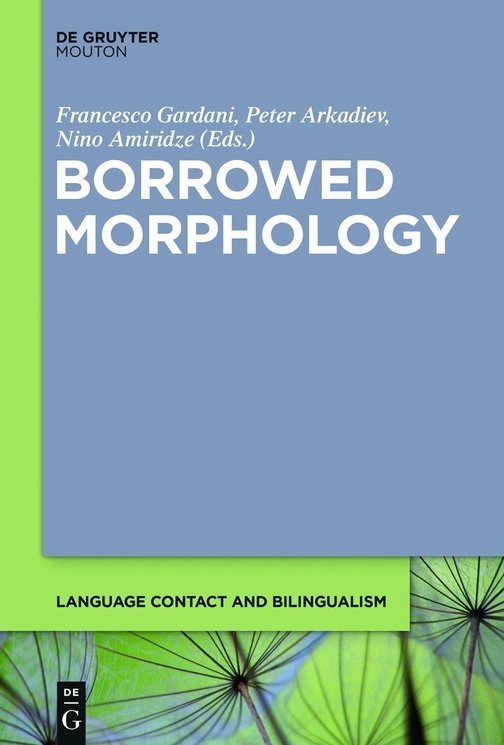
Sarah G. Thomason
The common consensus among historical linguists has always been that morphology in particular inflectional morphology is the grammatical subsystem least likely to be affected by language contact. The most popular explanation for this fact has been that foreign elements cannot easily make their way into the inflectional morphology because its tightly interconnected paradigmatic structures form a barrier (see Thomason and Kaufman 1988: 1415 for discussion and references). As with so many generalizations in historical linguistics, this one needs some shading when it is confronted with the evidence from a wide range of contact situations. In this paper I argue that there is no global dispreference for morphological diffusion. In certain types of contact situations, even inflectional morphology passes readily from one language to another. I do not mean to suggest that inflectional morphology is transferred as frequently as other structural features and lexicon; it isnt. My goal, instead, is to show that the diffusion of inflectional features is considerably more common than one might guess from the general language-contact literature.
The structure of the paper is as follows. Section 2 has two purposes: first, it covers preliminary issues that set the stage for the discussions to follow; and second, it characterizes the kinds of contact situations in which morphological transfer is most likely to occur. Section 3 focuses on borrowing situations with low levels of typological distance, Section 4 explores morphological transfer in instances of shift-induced interference, and in Section 5 we will consider cases involving deliberate morphological change. Section 6 is a brief summing-up conclusion.
Several distinctions must be made in order to address the issue of morphological diffusion between languages. Most importantly, a distinction needs to be drawn between two quite different kinds of intense contact situations and their linguistic outcomes (as outlined in Thomason and Kaufman 1988: chapter 3), one is morphological borrowing in a narrow sense of borrowing, where bilingual speakers transfer grammatical morphemes and/or morphological patterns from one of their languages into the other; the other type of diffusion is shift-induced interference, where (thanks to imperfect learning) shifting speakers introduce morphological features from their original L1, their heritage language, into the target language, the language they are shifting to. In this paper I will use the term borrowing only in the narrow sense. By including both of these types of contact-induced change, I depart from the definition of morphological borrowing adopted by Gardani (2012), which excludes shift-induced interference.
The distinction between interference via borrowing and interference via shift correlates robustly with a difference in the kinds of linguistic features transferred from one language to the other. In borrowing, the predominant interference features are words, with structural features lagging behind and confined to intense (rather than casual) contact situations. In shift-induced interference, by contrast, the predominant interference features are structural, specifically phonological and syntactic; there may be few transferred lexical items in a shift situation. (Although these correlations are robust, they are not exceptionless. In some cultures, for instance, lexical borrowing is considered inappropriate; when such cultures come into intense contact with other cultures, therefore, the linguistic outcome might involve structural borrowing without lexical borrowing for examples, see e.g. Kroskrity 1993 and Aikhenvald 2002.)
The reason this distinction is important in the present context is that contact-induced morphological changes are most likely to occur in two distinct kinds of situations: first, cases of borrowing (in my narrow sense) in which the languages in contact are very closely related, perhaps even dialects of the same language; and second, cases of shift-induced interference in which the shifting speakers version of the target language displays numerous learners errors. In the borrowing situations, the typological distance between the source language and the receiving language, at least at the relevant structure point(s), is minimal. As we will see in Section 4 below, typological distance appears to be less important in shift situations than in borrowing situations.
It is also important to note that borrowing is more likely than shift-induced interference to include the transfer of morphemes in addition to structure. In shift-induced interference it is often (though by no means always) the case that only structures are transferred, so that the innovative structures are expressed by native morphemes in the receiving language. In this paper I consider both of these types of morphological interference that is, with and without accompanying transfer of morphemes (for discussion of this distinction, see Heath 1978 on direct vs. indirect diffusion, e.g. p. 125, followed by later authors, e.g. Thomason and Kaufman 1988, e.g. p. 32; Matras and Sakel 2007). This is again in contradistinction to the approach adopted in Gardani 2012, where only morphological borrowing that includes transferred morphemes is considered. My main reason for being more inclusive is that general claims about the possibilities and probabilities of morphological interference can (in my opinion) contribute to our overall understanding of processes and results of contact-induced change only if they encompass the entire range of contact situations. Another reason for including shift situations and structure-only contact-induced changes is that in many or most shift situations, borrowing and shift-induced interference occur simultaneously, mediated by different agents; and it is not always possible to determine which process(es) has/have produced a given innovation. An example is the Chantyal-Nepali contact situation described by Noonan (2008: 8485), in which Chantyal speakers used Nepali regularly and were far outnumbered by Nepali speakers, but in which many speakers of Nepali (and several other languages) learned Chantyal because of its speakers advantageous economic position. The sociolinguistic complexities of this situation most likely promoted both borrowing and shift-induced interference, including the transfer of morphemes such as a comparative, a benefactive for, and a comitative (Noonan 2008: 95).
Obviously, given the relevance of typological distance in morphological borrowing and its probable relevance in shift-induced morphological interference, we must also distinguish between pairs of languages in contact according to typological congruence: contact-induced morphological changes, especially in the inflectional morphology and especially in borrowing situations, occur much more frequently at typologically congruent structure points than at typologically disparate structure points. (The general argument about typological congruence facilitating structural borrowing was made as early as Weinreich 1953 and Heath 1978; the same argument has also been made by numerous later authors, e.g. Thomason and Kaufman 1988. The greater importance of typological congruence in borrowing situations as opposed to shift situations is discussed in more detail in Thomason 2014). The notion of typological congruence, as I am using it here, is not necessarily self-evident, so I will be explicit about two crucial aspects of the phenomenon: it is gradient, and it is structure-specific. A structure in one language may be more or less similar typologically to a functionally comparable structure in another language; the more similar two morphological structures are, the more likely they are to be the target of morphological transfer. Assessing the degree of typological congruence in a given instance is often not a straightforward either/or decision. In efforts to explain the linguistic outcomes of language contact, it is not useful to compare (for instance) morphosyntactic systems as wholes: the fact that languages A and B have more or less completely dissimilar verbal systems, for instance, does not make it less likely that cases can diffuse from A to B if the languages have overlapping categories in noun declension. Although typological distance is relevant for both borrowing and shift situations, its role is clearer in borrowing than in shift-induced interference. Given sufficiently intense contact which, in shift situations, usually means that shifting speakers greatly outnumber target-language speakers morphological innovations in the shifting groups version of the target language can include typologically novel features. This can also happen even in borrowing situations, but it is relatively rare (see Thomason 2001b for discussion).
Font size:
Interval:
Bookmark:
Similar books «Borrowed Morphology»
Look at similar books to Borrowed Morphology. We have selected literature similar in name and meaning in the hope of providing readers with more options to find new, interesting, not yet read works.
Discussion, reviews of the book Borrowed Morphology and just readers' own opinions. Leave your comments, write what you think about the work, its meaning or the main characters. Specify what exactly you liked and what you didn't like, and why you think so.

